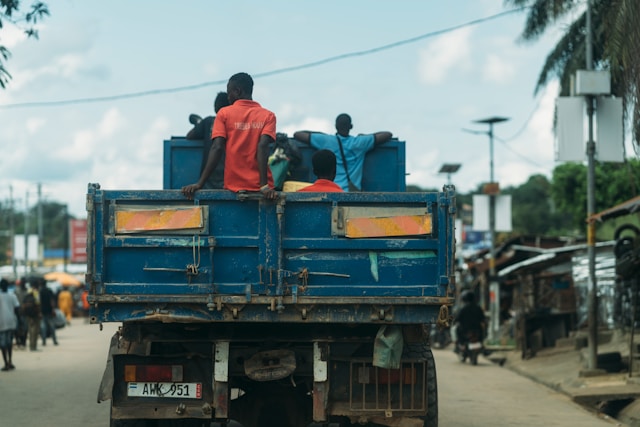A Crisis in Plain Sight
Human trafficking is a devastating crisis across Southern Africa, with Zimbabwe at its epicentre. This modern slavery thrives where poverty, gender inequality, and weak governance create fertile ground for predators. The SADC region is a complex hub for this crime, acting as a source, transit route, and destination for victims. Zimbabwean women and children are trafficked to countries such as South Africa, Kuwait, and Oman, while the country also serves as a transit route for people from as far as Somalia and Ethiopia.
Human trafficking is not a distant problem but a domestic one. In Zimbabwe, children are forced to work in mines, farms, and private homes.[1] The severity of this exploitation drew international attention in 2016 when 213 citizens were repatriated from Kuwait, prompting the US State Department to highlight Zimbabwe’s severe trafficking situation.[2] This vulnerability, driven by poverty and unemployment, is mirrored across the region. To combat this scourge effectively, a unified strategy integrating structural reform, strong regional cooperation, and survivor-led support is required. Structural reforms attack the root causes, regional cooperation dismantles the transnational networks, and a focus on community and survivors ensures interventions are sustainable and address the deep human trauma involved.
The Human Face of a Regional Crisis
The stories of survivors reveal the cruel deception traffickers use.
MN, a 17-year-old girl, was lured by the promise of a job in South Africa, only to be trapped into forced labour.[3]
T, a 33-year-old mother, was tricked into sex trafficking, and H.G. was promised a hotel job in Kuwait but had her passport taken and was forced into slave-like conditions.[4] These accounts show a disturbing pattern of traffickers preying on economic desperation and legal loopholes.
A Blueprint for Action
To dismantle this criminal enterprise, a multi-pronged approach based on three interconnected pillars is required.
1. Strengthen Legal Frameworks and Regional Cooperation
Although international agreements like the Palermo Protocol³ and various AU and SADC anti-trafficking plans exist, their implementation is often inconsistent.[5] To be more effective, SADC states must harmonise their laws and data collection. True regional cooperation is essential, requiring joint task forces and information sharing through bodies like the Southern African Regional Police Chiefs Cooperation Organization (SARPCCO).[6] Such collaboration is the only way to dismantle the sophisticated networks that exploit porous borders
2. Build Community Resilience
The fight against trafficking must be waged in towns and villages. Official campaigns often fail to reach remote communities, making grassroots initiatives vital.[7] Community-led programs using theatre and local media have been effective in training people to identify the signs of trafficking and build trust in reporting mechanisms.[8]
3. Put Survivors at the Centre
A survivor-centred approach is non-negotiable. Survivors often suffer severe physical and psychological harm, such as complex post-traumatic stress disorder (PTSD), and require long-term support.[9] While Zimbabwe’s Trafficking in Persons Act mandates victim protection, its implementation is crippled by a lack of state funding, leaving NGOs to bear the heavy burden.[10] For these policies to be effective, survivors must be involved in designing them; their lived experiences are our most critical tool.
A Call to Action
Human trafficking in Southern Africa is a severe violation of human rights rooted in systemic failures. To eradicate it, we must address the root causes of poverty, strengthen regional cooperation, and prioritise the recovery of survivors through comprehensive, trauma-informed support. This fight requires sustained commitment from all levels of society to build a future in which every individual is safe and free.
A full version of the essay is available here. The text is part of an award- winning essay series by the Chair of African Legal Studies. Gerald is among the winners of the Essay Writing Competition.
[1] International Labour Organization, “Global Estimates of Modern Slavery: Forced Labour and Forced Marriage,” (Geneva: ILO, 2017).
[2] U.S. Department of State, “2016 Trafficking in Persons Report: Zimbabwe,” (Washington, D.C.: U.S. Department of State, 2016).
[3] Maybe Zengenene, ‘Trafficking of women and girls in the District of Seke: Lessons from the Zimbabwe’s Second Republic’ (2020) 33 Masyarakat, Kebudayaan dan Politik 256, 257-259.
[4] Maybe Zengenene, ‘Trafficking of women and girls in the District of Seke’ 257-259; Farayi Machamire, ‘Zim-Kuwait “slaves” narrate horror tales’ (accessed 31 December 2024).
[5] Alecia Dionne Hoffman and Sabella Ogbobode Abidde (eds), Human trafficking in Africa: New paradigms, new perspectives (Springer Nature Switzerland AG 2021) 281; Philip H Frankel, Human trafficking in South Africa (BestRed, an imprint of HSRC Press 2023), 36.
[6] Chembe ‘Human trafficking in southern Africa’ 284.
[7] US Department of State, 2024 Trafficking in Persons Report: Zimbabwe (2024).
[8] IOM Zimbabwe, ‘Counter-Trafficking Programme’ https://zimbabwe.iom.int/counter-trafficking-programme accessed 21 April 2025.
[9] Ronald Chambers and others, ‘Trauma-coerced Attachment and Complex PTSD: Informed Care for Survivors of Human Trafficking’ (2022) 10 Journal of Human Trafficking 41.
[10] Trafficking in Persons Act 2014 (Zimbabwe), ss 5, 8; UNODC, The Zimbabwe Trafficking in Persons National Plan of Action (NAPLAC)
